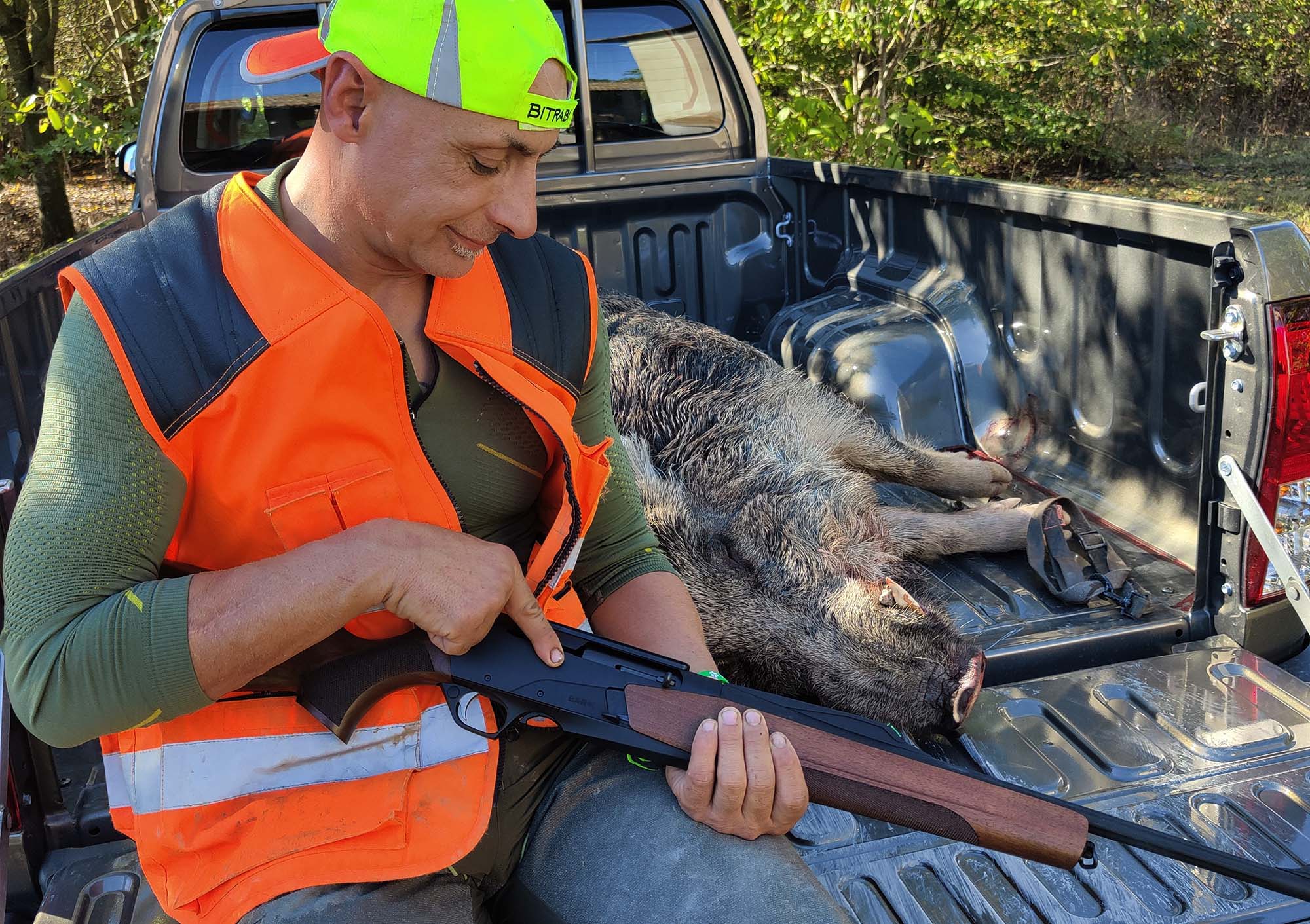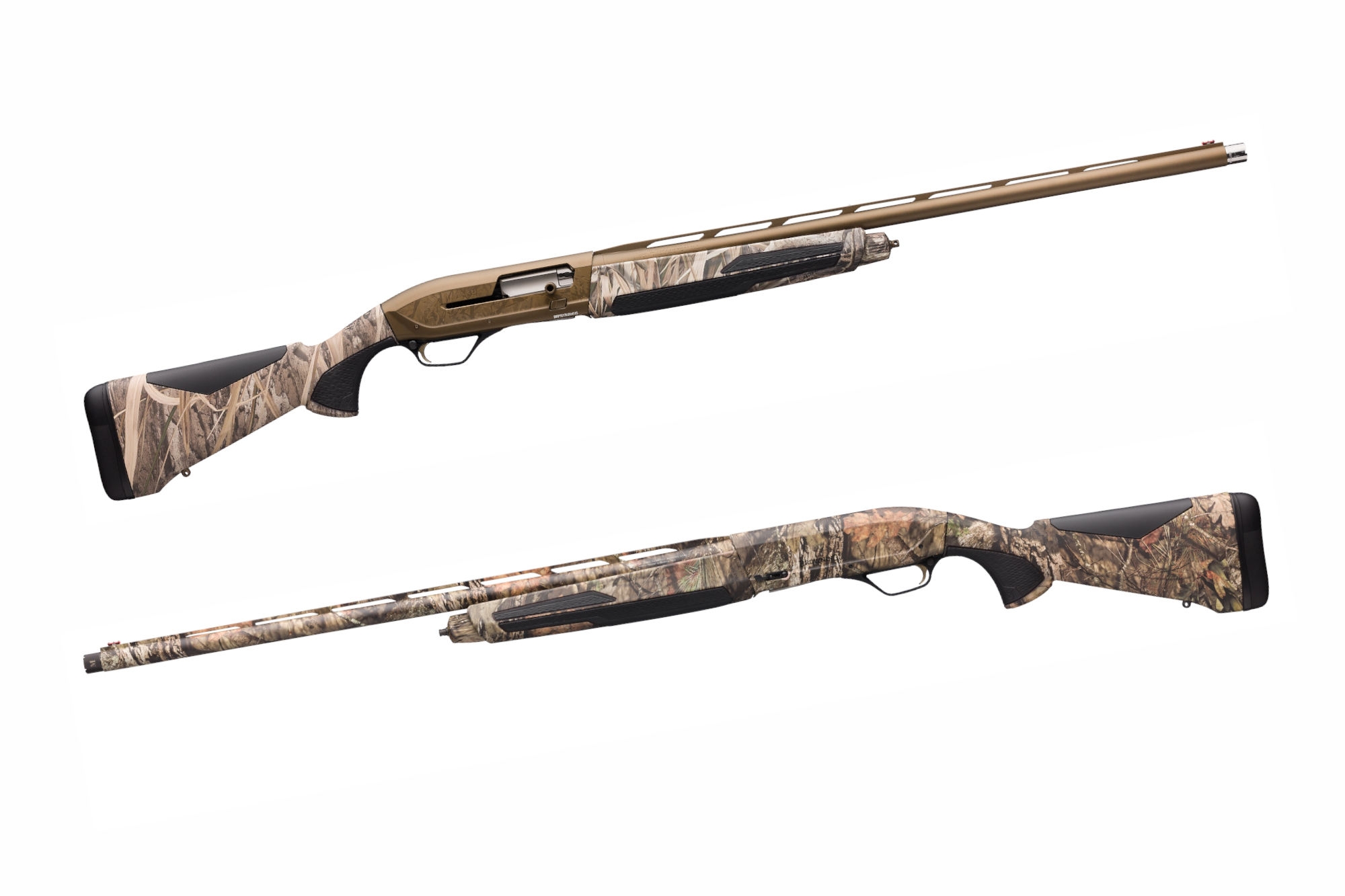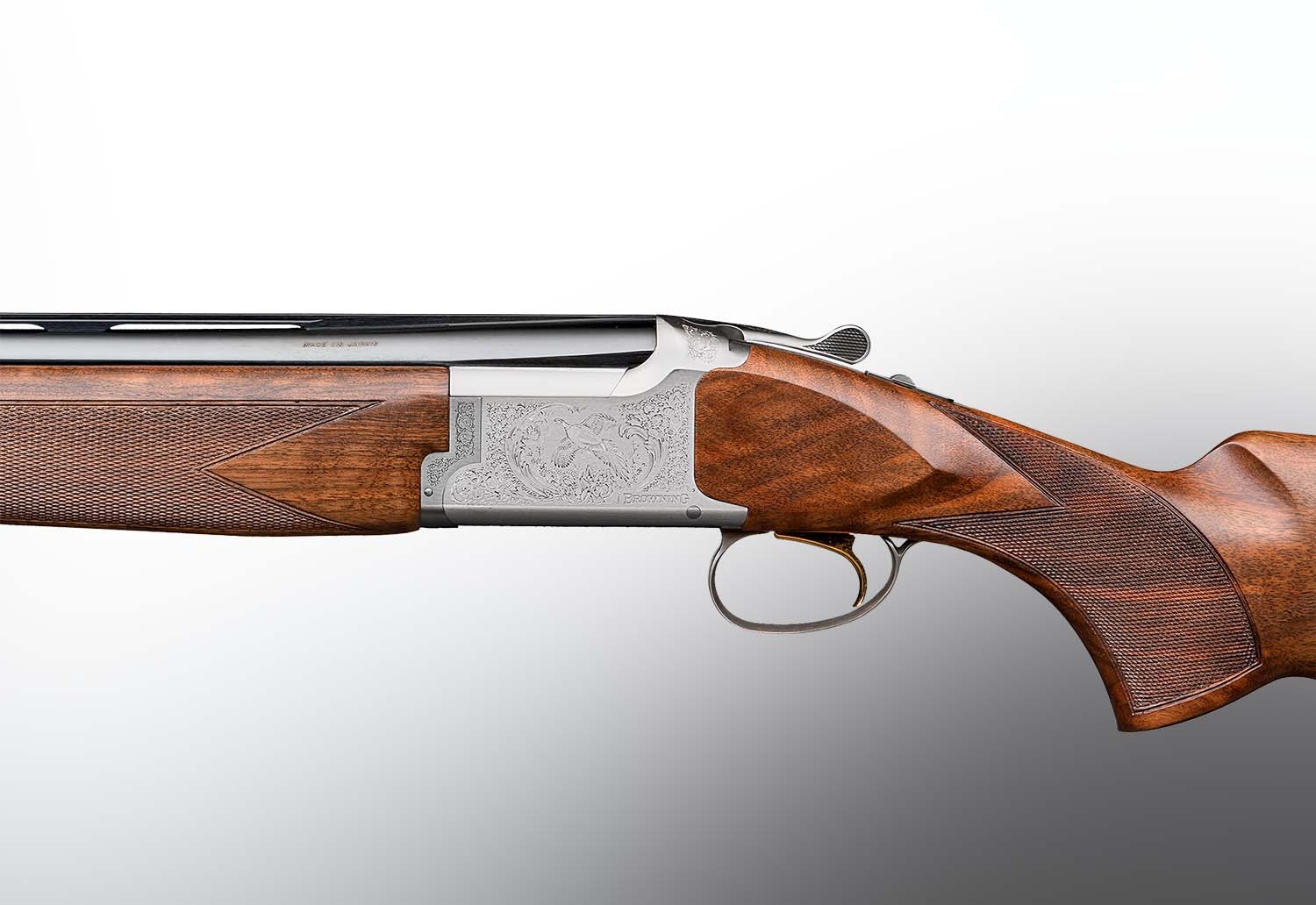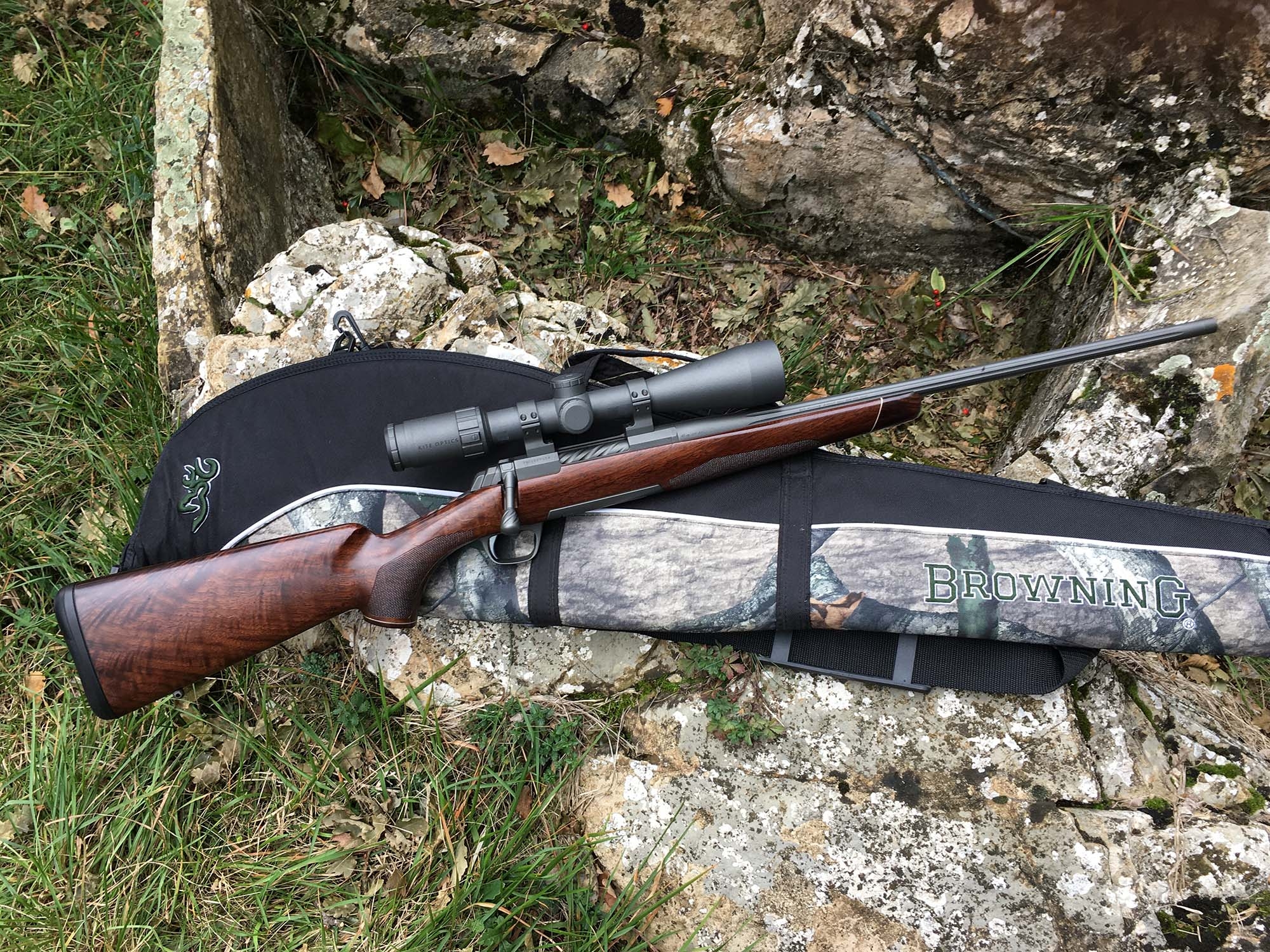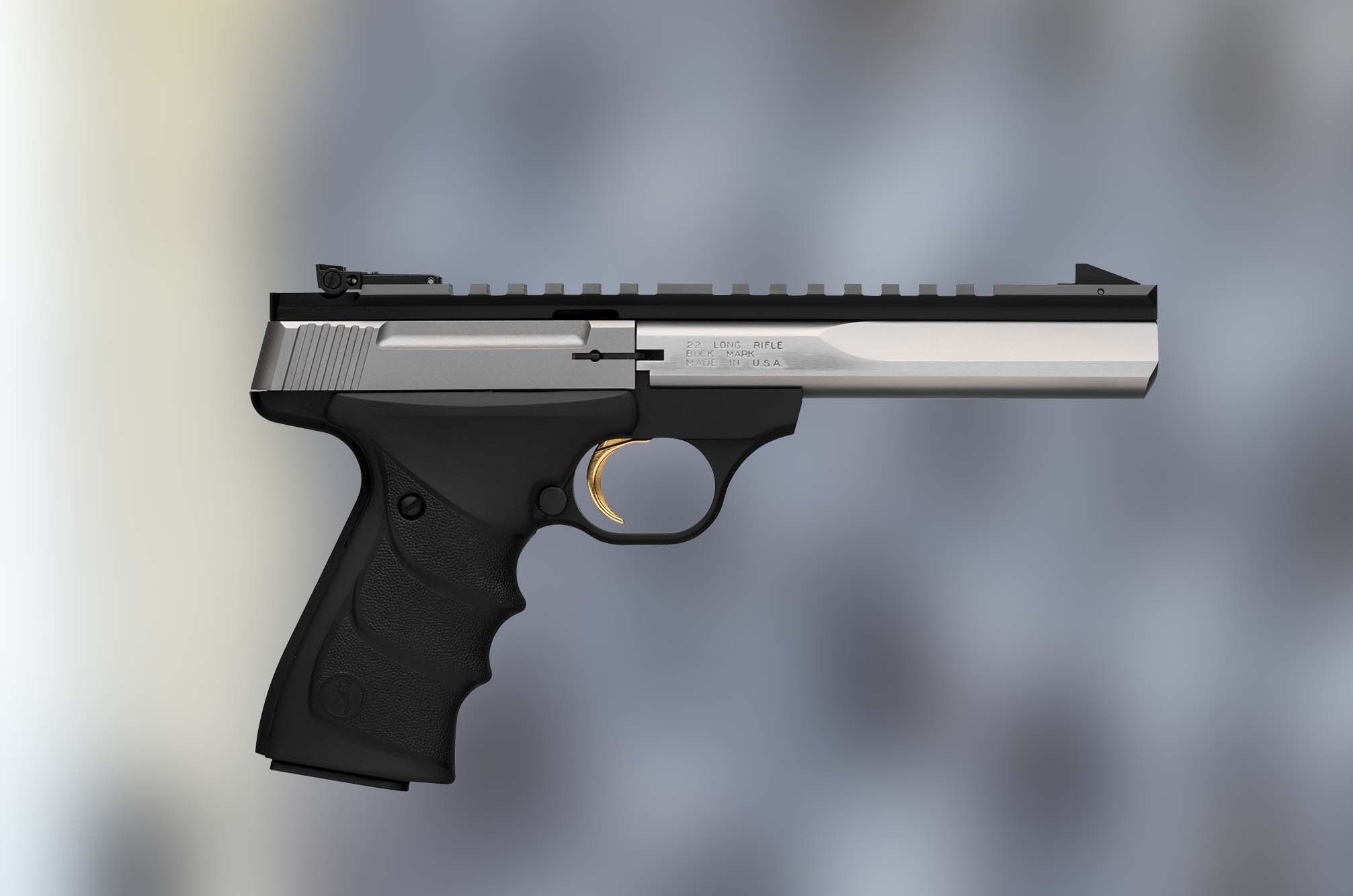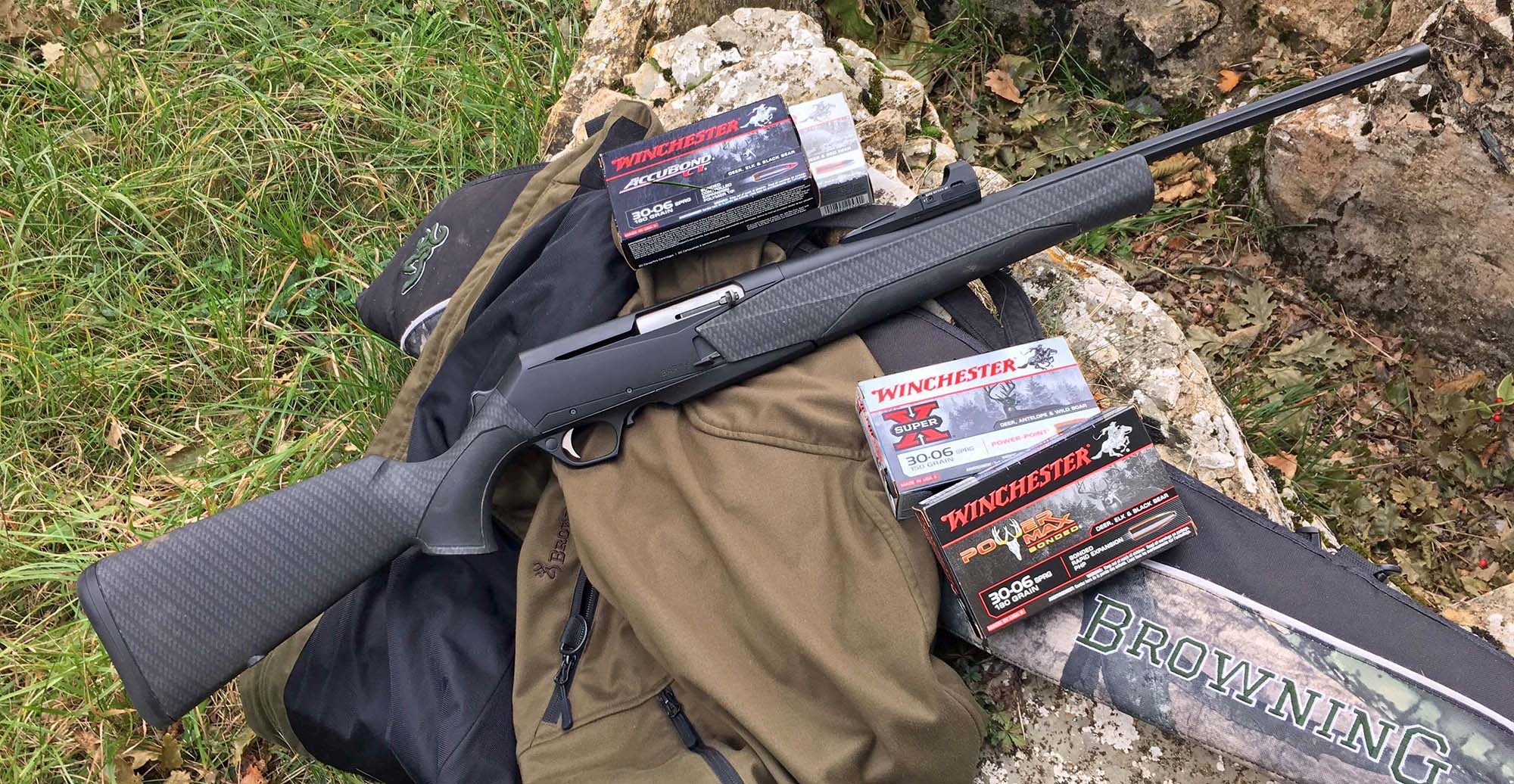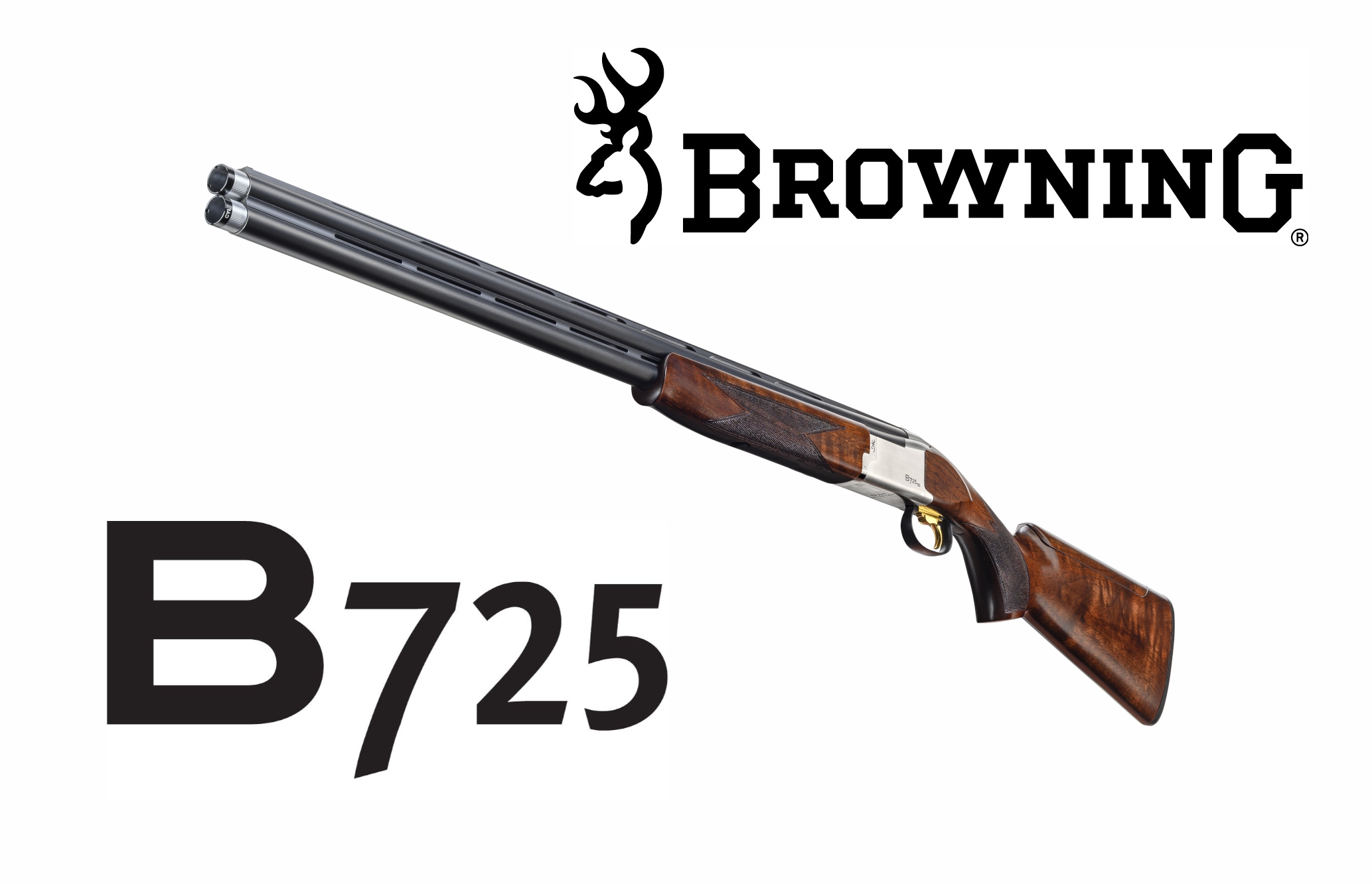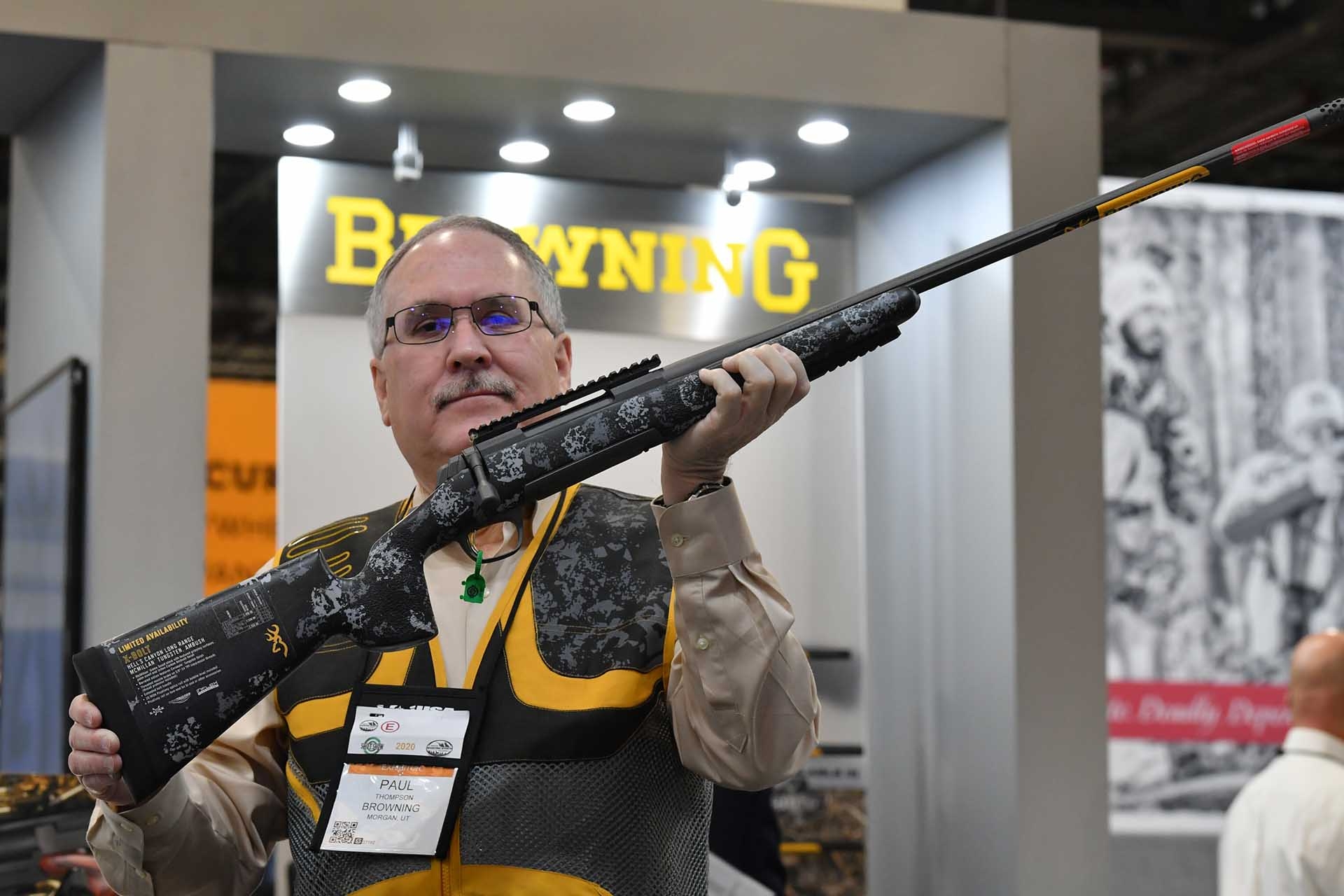Straight pull, what are we talking about?
When we talk about a straight-pull action, we must immediately say that we are talking about a rifle. A repeating hunting rifle, to be precise. What differentiates it from all other rifles? The fact that it is a manually operated firearm. And what differentiates it from lever-, pump- (slide action) or bolt-actions? The fact that the bolt can be cycled with just a linear motion! In other words, it is a repeating rifle in which case ejection, reloading and cocking operations are performed by the forward and backward movement of a lever operated by the hunter/shooter. This action type is now common to many rifles of all brands and generally consists of a bolt with two independent parts: the bolt head rotates for locking and unlocking the action, while the bolt body moves backwards, cocks the firing mechanism and chambers the next cartridge from the magazine, all through a simple linear motion performed by the operator acting on the handle. The appearance of the firearm is therefore very similar to a bolt-action, but no rotation of the bolt is required – only and exclusively a linear motion, so as to make the reloading action of this type of carbine faster than any bolt-action and – after a minimum of practice – without without taking your eyes off the sights.
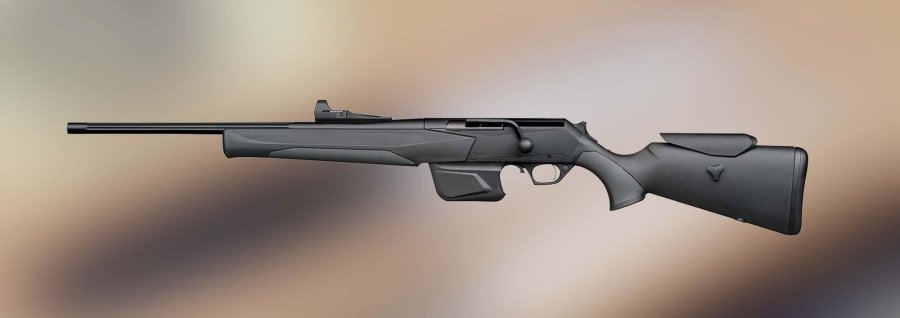
The straight-pull rifle: king of versatility
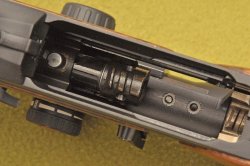
Going into technical details, and in spite of the aforementioned external resemblance to bolt-actions deriving from the generous bolt handle knob, all straight-pull rifles seem to be in truth much more inspired by semi-automatics than by the Mauser-type bolt-action. A technical analysis of the reloading mechanism shows this, making it immediately clear that they are actually derived from semi-automatics, the most significant difference being the replacement of the gas bloc with a manual action that must be operated by the hunter.
How should we consider it, then? No more and no less as the high-efficiency, condensed optimum (especially in terms of safety for follow-up shots) both for all forms of selection hunting – territory of bolt action rifles – and in the smaller domain of semi-automatics, such as driven hunts, wild boar driven hunting in the first place. Just below the former in terms of accuracy – and that only at long and very long ranges – and at the same level as the latter with regard to action speed, straight pulls are versatile and unstoppable in any condition and situation.
In a few words: the perfect rifle for hunters passionate about big game in all its forms, as well as the ideal companion for the professional hunter in general, both always in need of ultra-reliable tools in any situation for greater efficiency in hunting and above all to avoid any possible danger.
The straight-pull rifle according to Browning
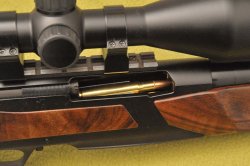
Could a big company such as Browning afford not to enter this very interesting market segment? Of course not, and its entry with that true masterpiece that was, and still is, the Maral was disruptive. To design it, Browning thought long and hard. First of all, they analyzed the international market, with particular attention to those countries where the use of semi-automatics is forbidden, but big game hunting is a sort of religion. Then, they tried to find the best solution, only to find out that they already had the solution to the problems of reliability and simplicity in house. They only had to use the super-reliable BAR action (a military-derived gun itself, with all that it implies), and made the necessary, minimal modifications to obtain a reliability proven by over a million rifles used all over the world. All that with a tried robustness and without unreasonable and irrational complications.
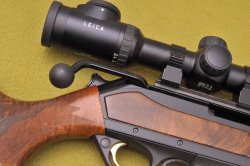
In order to transform a Browning BAR into a Maral, it was sufficient to make the cocking handle act on the bolt carrier, modify its shape to improve maneuverability and eliminate both the recoil spring and the gas bloc, both components that in many firearms – even if never in Browning ones – can be critical.
Is that all there is? Not quite and not only, because in Herstal they wanted to create something particularly refined. Capable of satisfying both the professional hunter in Africa who has to fire a finishing shot at a wounded game animal, as well as the most demanding boar hunters, from selective hunters from the high hide to those who are passionate about hound hunting and driven hunts in all their forms.
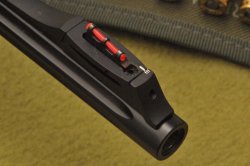
These are in fact situations where it is necessary to fire quick follow-up shots: can you imagine a wounded buffalo? In the case of wild boar hunting, if the dogs find a herd of boars running fast and appearing for just a few moments, then the possibility of a quick second shot so as to take more prey (or maybe a follow-up shot at a large animal that is only wounded) is essential. These are situations in which even having to manually return the bolt handle to the down-and-locked position takes time and can cause the gun to deviate from the line of sight if you didn't practice enough. Hence the ingenious idea: the straight-pull action on the Maral acts only for the backward motion of the bolt. The locking into battery is achieved by simply letting the charging handle go forward. The entire bolt travel takes place inside the gun's frame, guaranteeing fast and extremely precise operation. Impeccable.
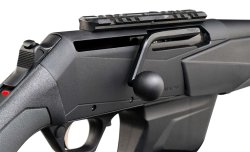
It is no coincidence that Browning can claim it's "the fastest straight pull rifle on the market"! The Maral has a slide for manual cocking of the first shot only: there is no need to re-cock the firing pin with every shot, because after the first one, by operating the bolt handle you have only to pull the trigger. You just pull the bolt back, and without moving your eyes from the line of sight, a special spring takes care of cocking and locking the action. With an ejection/reloading time equal to that of recoil/muzzle flip management – that is, practically immediate. No small advantage with all the safety in the world. These are things that still make the Maral a market reference point, both for hunters and for all the competitors.
Versions of the Browning Maral
Today, after years of practice and success, the Maral – which takes its name from the Cervus elaphus maral, better known as the Caspian red deer – is available in a range of different versions, each of which can be accessorized in any way to meet every taste and need. It is in fact available in both right-handed and left-handed versions, in all the main calibers from .308 to .300 Winchester Magnum, including the 9.3X62 and the ever-popular .30-06 S, with magazines from 5 to 10 rounds (where allowed by law) and barrels of lengths proportional to the best possible compromise in terms of performance with respect to the caliber and the possible engagement distances between short, medium (typical in driven hunting) and long range (for selection hunting).
Possible choices and customization are almost endless, as are the combinations of aesthetics and technical functionality.
For lovers of the traditional look, here are the beautiful Big Game, Fluted Threaded and Platinum, the real top of the range, all featuring select wood stocks and the possibility of fine engravings and various customization levels, both aesthetic and functional, among which stands out for sure the threaded muzzle for the possible mounting of muzzle brakes or suppressors.
For those who are looking for tools with a very high ballistic value, indestructible and characterized by military-level sturdiness, there is the Compo Nordic series, featuring the same action as the other models, but with technopolymer stocks in black and brown. Every level of customization is possible for every shooter, and for every different shooting need, from driven hunting with iron sights to selection hunting with optics.

For all of them, the possibility of having them fitted with a Nomad Hibrid rail, where you can mount from red dot sights up to conventional optics of any size and magnification.
The only exception is the BAR Reflex's straight-pull version, the Maral Nordic Compo Reflex, which was designed from the start for driven hunting and comes with a proprietary Kite Optics K1 red dot sight already installed, for exceptional aiming speed and accuracy.
In fact, Reflex means that this Maral (like its semi-auto cousin the BAR) is fitted with a red dot reflex sight positioned in the most advanced and lowest point (up to 6 mm lower than a receiver mount!) guaranteeing on the one hand perfect eye/target alignment, and on the other hand no need for adaptation for those who practice other forms of hunting, perhaps with smoothbore guns, to the benefit of a lightning fast swing and use.
Another no small advantage: even on the Reflex you can fit the Nomad Hibrid rail, which means having two rifles in one in a flash!
Let me make an example: it's dawn, I'm going to my high hide and obviously assuming shooting distances between 150/200 meters with low light conditions, I'm mounting the most appropriate optic on the rail. Well, the Kite K1 red dot remains in place without any need for removal. Then, in broad daylight, I'm going for a hound hunt with my friends. No need to disassemble and reassemble, zeroing and re-zeroing: I just remove the optic from the rail, and I'll have the rifle ready with its nice red dot sight! Evening has come and I decide to wait until nightfall: I simply reassemble the optic on the rail and that's it.
Brilliant! All this, with the guarantee of a superior ballistics performance coming from the experience of those who, like Browning, cut their teeth as the largest manufacturer of machine guns barrels in the world.
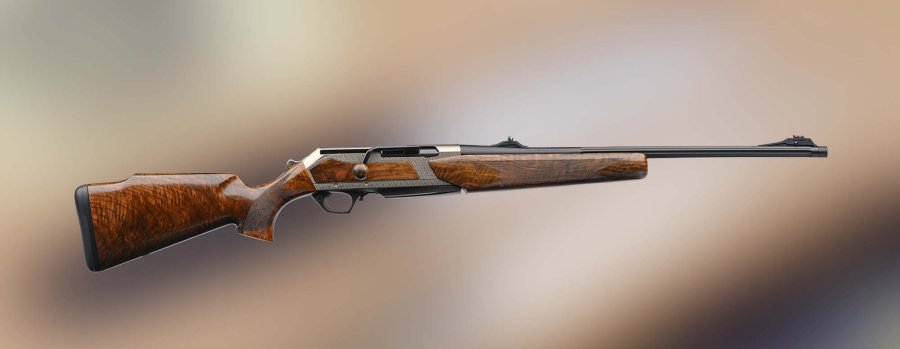
To learn more please visit the Browning website.



